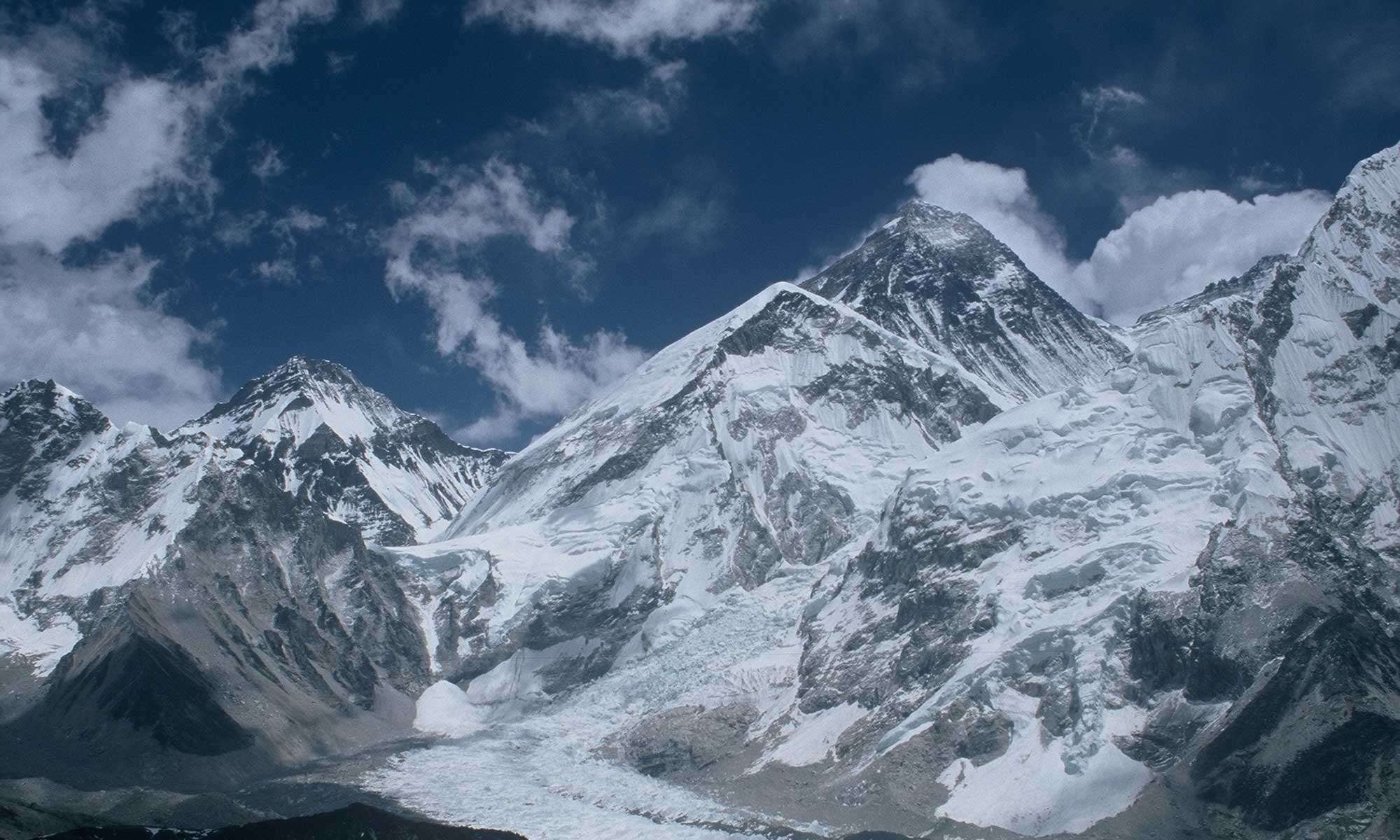It was half as long ago as the first ascent of Mount Everest, which this year marks its 70th anniversary. Exactly 35 years ago today, on 12 May 1988, Stephen Venables became the first Briton to reach the highest point on earth at 8,849 meters without bottled oxygen.
Beforehand, he had succeeded together with the Canadian Paul Teare and the two U.S. Americans Robert Anderson and Ed Webster in making the second ascent of the 3,000-meter-high, heavily glaciated and thus avalanche-prone Everest East Face. All four climbed without breathing masks. In 1983, the U.S. climbers Carlos Buhler, Kim Momb and Louis Reichard had mastered the Kangshung Face for the first time – with bottled oxygen.
“At absolute limit”

Venables, Teare, Anderson and Webster opened a new extremely challenging route, via a pillar they christened the “Neverest Buttress.” The route ended on the Nepalese normal route at the South Col. Teare subsequently refrained from attempting the summit because he showed symptoms of high-altitude cerebral edema. Webster turned back just before, Anderson at the 8,690-meter high South Summit. Only Venables reached the summit.
On the descent, his strength also left him, and he hallucinated. “I was at my absolute physiological limit,” Stephen said later in an interview. “All that day was a crossing barriers.” He survived a bivouac night in the open below the South Summit. But the odyssey didn’t end there. It took three and a half days for the trio to descend the Kangshung Face, in waist-deep snow, whiteout, without food. “Our ascent of the Kangshung was, for the four of us, the adventure of a lifetime,” Ed Webster summed up subsequently – Ed died last November,
No expedition has attempted the Kangshung Face for a long time. Why? That’s what I asked Stephen Venables on the occasion of the 35th anniversary of his summit success. The now 69-year-old Briton, a pioneer of Everest climbing, answered.
Stephen, the Kangshung flank of Mount Everest has been deserted for many years. Aside from the bureaucratic problems with the Sino-Tibetan authorities, why do you think no one tries the east side of Mount Everest anymore?

This amazes me. Or actually it does not amaze me, because Everest seems to have become the preserve of a very slickly operated tourist industry which bears little relation to normal mountaineering. Real dedicated mountaineers seem to have been driven away. However, ambitious climbers could find peace and quiet on the east side, so why don’t they go there? Perhaps they think it’s too dangerous? (And they would have a point!) Perhaps it is lack of money? These days it seems to be very hard to raise sponsorship for genuine exploratory mountaineering, as opposed to personality stunts.
Would your summit success even be possible today without bottled oxygen – if you had to join the queue of summit aspirants turning onto the normal route from the Kangshung Face?
Interesting. I have often pondered this. Any route up the East Face is going to finish on either the North-East Ridge or the South-East Ridge and, unless you choose to summit in bad weather – or off season – you are going to find yourself in a traffic jam. And, as we all know, long delays are not good for people suffering from hypoxia. Perhaps if your timing was perfect you could get onto the summit ridge late in the evening and climb through the night? But then you would hit the queues on the way down.
It seems that the only way to guarantee a clear passage to the summit these days is to climb a direct route up the North Face (e.g. “White Limbo” [route by Australians Timothy Macartney-Snape and Gregory Mortimer from 1984, without breathing mask] or Hornbein Couloir) or the West Ridge Direct. Now that would be something! The West Ridge Direct, alpine style, with no gas! (Tim Macartney-Snape tried it in 1990 but then opted for the safer South Col route – which in those days was still quite peaceful).
P.S. Macartney-Snape, by the way, was the first to start an Everest expedition at sea level in 1990: The Australian hiked from the Bay of Bengal to the highest mountain on earth and climbed it – as in 1984 without a breathing mask.

